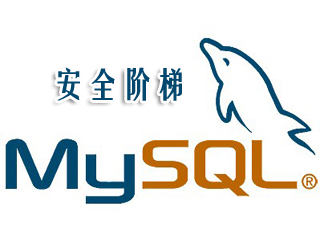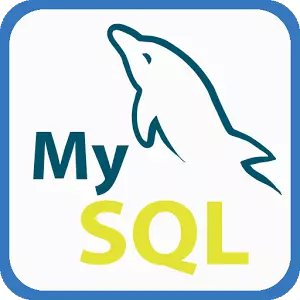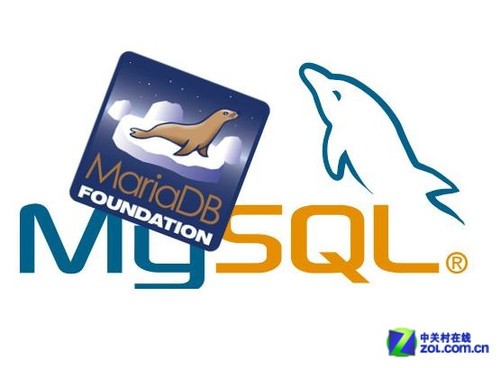10 recommended articles about CentOS6.5
Environment: CentOS6.5_x64Python version: 2.6 Use pyinstaller to package pyinstaller can package the python program into a binary file. The packaged file can also be executed in an environment without python (but there must be relevant underlying libc related so files). pyinstaller supports packaging python programs into a single file. All it does is convert text into binary, which does not speed up python. On the contrary, it will affect the running speed of the packaged program. Install pyinstaller through pip: pip install pyinstaller through source code: python setup.py install packager plus the -F parameter can package the program into a separate file: pyinstaller -F test1.py Use virtualenv packaging virtualenv is used to package an application Create a set of "isolated" Python
1. Talk about the current situation, prospects and opportunities of CentOS6.5_x64

Introduction: Environment: CentOS6.5_x64Python version: 2.6 Use pyinstaller to package pyinstaller can package python programs into binary files. The packaged files can also be executed in environments without python ( But there must be relevant underlying libc related so files). pyinstaller supports packaging python programs into a single file. All it does is convert text into binary, which does not speed up python. On the contrary, it will affect the running speed of the packaged program. Install p...
2. Detailed introduction to program packaging

Introduction: Environment: CentOS6.5_x64Python version: 2.6 Use pyinstaller to package pyinstaller can package python programs into binary files. The packaged files can also be executed in environments without python (but there must be relevant underlying libc related so files). pyinstaller supports packaging python programs into a single file. All it does is convert text into binary, which does not speed up python. On the contrary, it will affect the running speed of the packaged program. Install p...
3. Lamp environment to build Linux CentOS6.5 compile and install mysql5.6 specific details

Introduction: This article mainly introduces the detailed explanation of the Lamp environment to build Linux CentOS6.5 compilation and installation of mysql5.6. It has certain reference value for interested friends. We can refer to
4. Instance of installing CentOS6.5 with Redis in PHP development

Introduction: This article mainly introduces the example of installing CentOS6.5 with Redis in PHP development
5. MySQL5.6 in Centos6 .5 installation tutorial

Introduction: This article mainly introduces the installation tutorial of MySQL 5.6 under Centos 6.5 , very good, with reference value, friends in need can refer to

#Introduction: There is nothing particularly pointed out below. They are all commands that need to be executed by both servers, and Since it is a dual management center configuration, in fact, except for the configuration of some identification IDs and IPs on the two machines, other parameter configurations are basically the same. 1. Download mysql-cluster 7.3.7 http://dev.mysql.com/downloads /cluster/2. Environment cleaning and installation 1) Clean up the mysql service that comes with CentOS6.5. The first command is
7. MySQL-Cluster cluster construction ( Detailed code explanation based on RPM installation package

Introduction: 1. Download mysql-cluster 7.3.7 http://dev.mysql.com/downloads/cluster/2. Environment cleanup and Installation 1) Clean up the mysql service that comes with CentOS6.5. I can do it without executing the first command. If it is not possible on other systems, it is recommended to execute # yum -y remove mysql# rpm -qa | grep mysql*# rpm - e --nodeps
8. MySQL-detailed explanation of dual-machine HA based on Keepalived (picture and text)

Introduction: 1. Environment description: OS: CentOS6.5_X64 MASTER: 192.168.0.202 BACKUP: 192.168.0.203 VIP: 192.168.0.2042, configure two Mysql master-master synchronization Regarding the installation of MySQL, you can also refer to "MySQL - CentOS6.5 Compile and Install MySQL5.6.16". The master-master synchronization is based on the master-slave synchronization and the slave server is configured as
9. MySQL-Detailed introduction to MySQL high availability implementation

##Introduction: 1. Basic environment introduction and basic environment configuration node 1: node1.hulala.com 192.168.1.35 centos6.5_64 Add 8G new hard disk node 2: node2.hulala.com 192.168.1.36 centos6.5_64 Add 8G new hard disk vip 192.168.1. 39 Node 1 and Node 2 needs to be configured to modify the host name:
10. Sample code for MySQL-CentOS6.5_x64 installation and configuration drbd8.4.2

Introduction: 1. Host resources: NameIP configuration remarks Master192.168.0.152sda/10G,sdb/10G; Slave192.168.0.153sda/10G, sdb/10G; ************************************************DRBD download Address: htt
[Related Q&A recommendations]:
python - flask-login Regarding the session timeout issue of login_manager.session_protection?
linux - Mongo failed to start on centos
linux operation and maintenance - How to solve the problem of a large number of migration and watchdog processes in the Linux system?
centos6.5 - mysql connection 10060
The above is the detailed content of 10 recommended articles about CentOS6.5. For more information, please follow other related articles on the PHP Chinese website!

Hot AI Tools

Undresser.AI Undress
AI-powered app for creating realistic nude photos

AI Clothes Remover
Online AI tool for removing clothes from photos.

Undress AI Tool
Undress images for free

Clothoff.io
AI clothes remover

Video Face Swap
Swap faces in any video effortlessly with our completely free AI face swap tool!

Hot Article

Hot Tools

Notepad++7.3.1
Easy-to-use and free code editor

SublimeText3 Chinese version
Chinese version, very easy to use

Zend Studio 13.0.1
Powerful PHP integrated development environment

Dreamweaver CS6
Visual web development tools

SublimeText3 Mac version
God-level code editing software (SublimeText3)

Hot Topics
 When might a full table scan be faster than using an index in MySQL?
Apr 09, 2025 am 12:05 AM
When might a full table scan be faster than using an index in MySQL?
Apr 09, 2025 am 12:05 AM
Full table scanning may be faster in MySQL than using indexes. Specific cases include: 1) the data volume is small; 2) when the query returns a large amount of data; 3) when the index column is not highly selective; 4) when the complex query. By analyzing query plans, optimizing indexes, avoiding over-index and regularly maintaining tables, you can make the best choices in practical applications.
 Explain InnoDB Full-Text Search capabilities.
Apr 02, 2025 pm 06:09 PM
Explain InnoDB Full-Text Search capabilities.
Apr 02, 2025 pm 06:09 PM
InnoDB's full-text search capabilities are very powerful, which can significantly improve database query efficiency and ability to process large amounts of text data. 1) InnoDB implements full-text search through inverted indexing, supporting basic and advanced search queries. 2) Use MATCH and AGAINST keywords to search, support Boolean mode and phrase search. 3) Optimization methods include using word segmentation technology, periodic rebuilding of indexes and adjusting cache size to improve performance and accuracy.
 Can I install mysql on Windows 7
Apr 08, 2025 pm 03:21 PM
Can I install mysql on Windows 7
Apr 08, 2025 pm 03:21 PM
Yes, MySQL can be installed on Windows 7, and although Microsoft has stopped supporting Windows 7, MySQL is still compatible with it. However, the following points should be noted during the installation process: Download the MySQL installer for Windows. Select the appropriate version of MySQL (community or enterprise). Select the appropriate installation directory and character set during the installation process. Set the root user password and keep it properly. Connect to the database for testing. Note the compatibility and security issues on Windows 7, and it is recommended to upgrade to a supported operating system.
 Difference between clustered index and non-clustered index (secondary index) in InnoDB.
Apr 02, 2025 pm 06:25 PM
Difference between clustered index and non-clustered index (secondary index) in InnoDB.
Apr 02, 2025 pm 06:25 PM
The difference between clustered index and non-clustered index is: 1. Clustered index stores data rows in the index structure, which is suitable for querying by primary key and range. 2. The non-clustered index stores index key values and pointers to data rows, and is suitable for non-primary key column queries.
 MySQL: Simple Concepts for Easy Learning
Apr 10, 2025 am 09:29 AM
MySQL: Simple Concepts for Easy Learning
Apr 10, 2025 am 09:29 AM
MySQL is an open source relational database management system. 1) Create database and tables: Use the CREATEDATABASE and CREATETABLE commands. 2) Basic operations: INSERT, UPDATE, DELETE and SELECT. 3) Advanced operations: JOIN, subquery and transaction processing. 4) Debugging skills: Check syntax, data type and permissions. 5) Optimization suggestions: Use indexes, avoid SELECT* and use transactions.
 The relationship between mysql user and database
Apr 08, 2025 pm 07:15 PM
The relationship between mysql user and database
Apr 08, 2025 pm 07:15 PM
In MySQL database, the relationship between the user and the database is defined by permissions and tables. The user has a username and password to access the database. Permissions are granted through the GRANT command, while the table is created by the CREATE TABLE command. To establish a relationship between a user and a database, you need to create a database, create a user, and then grant permissions.
 Can mysql and mariadb coexist
Apr 08, 2025 pm 02:27 PM
Can mysql and mariadb coexist
Apr 08, 2025 pm 02:27 PM
MySQL and MariaDB can coexist, but need to be configured with caution. The key is to allocate different port numbers and data directories to each database, and adjust parameters such as memory allocation and cache size. Connection pooling, application configuration, and version differences also need to be considered and need to be carefully tested and planned to avoid pitfalls. Running two databases simultaneously can cause performance problems in situations where resources are limited.
 Explain different types of MySQL indexes (B-Tree, Hash, Full-text, Spatial).
Apr 02, 2025 pm 07:05 PM
Explain different types of MySQL indexes (B-Tree, Hash, Full-text, Spatial).
Apr 02, 2025 pm 07:05 PM
MySQL supports four index types: B-Tree, Hash, Full-text, and Spatial. 1.B-Tree index is suitable for equal value search, range query and sorting. 2. Hash index is suitable for equal value searches, but does not support range query and sorting. 3. Full-text index is used for full-text search and is suitable for processing large amounts of text data. 4. Spatial index is used for geospatial data query and is suitable for GIS applications.






